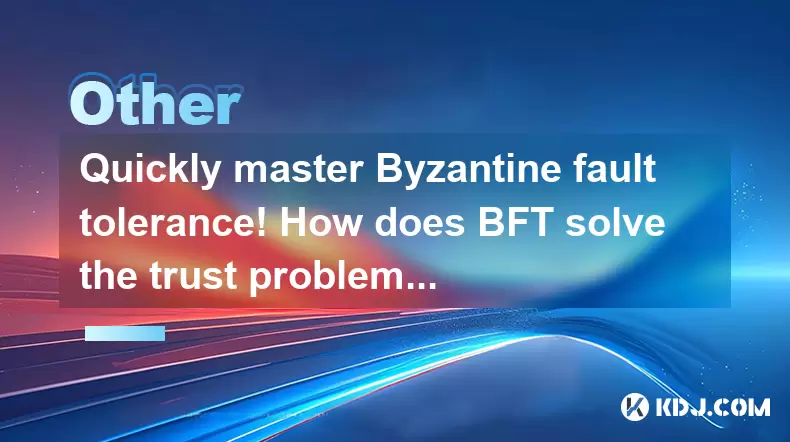-
 Bitcoin
Bitcoin $115200
-2.68% -
 Ethereum
Ethereum $3601
-5.16% -
 XRP
XRP $3.035
-2.96% -
 Tether USDt
Tether USDt $0.9997
-0.04% -
 BNB
BNB $764.5
-5.43% -
 Solana
Solana $168.1
-5.92% -
 USDC
USDC $0.9998
-0.02% -
 Dogecoin
Dogecoin $0.2090
-4.80% -
 TRON
TRON $0.3272
-0.49% -
 Cardano
Cardano $0.7306
-5.00% -
 Hyperliquid
Hyperliquid $39.16
-12.22% -
 Stellar
Stellar $0.3967
-4.96% -
 Sui
Sui $3.566
-5.95% -
 Chainlink
Chainlink $16.55
-6.57% -
 Bitcoin Cash
Bitcoin Cash $552.3
-3.90% -
 Hedera
Hedera $0.2516
-4.69% -
 Avalanche
Avalanche $21.99
-5.75% -
 Toncoin
Toncoin $3.621
-0.28% -
 Ethena USDe
Ethena USDe $1.000
-0.03% -
 UNUS SED LEO
UNUS SED LEO $8.951
0.02% -
 Litecoin
Litecoin $105.9
-3.59% -
 Shiba Inu
Shiba Inu $0.00001232
-5.00% -
 Polkadot
Polkadot $3.640
-5.55% -
 Uniswap
Uniswap $9.048
-7.03% -
 Monero
Monero $301.8
-1.51% -
 Dai
Dai $0.9999
-0.01% -
 Bitget Token
Bitget Token $4.334
-3.66% -
 Pepe
Pepe $0.00001064
-6.17% -
 Cronos
Cronos $0.1367
-5.78% -
 Aave
Aave $259.2
-4.59%
Quickly master Byzantine fault tolerance! How does BFT solve the trust problem?
BFT ensures consensus in distributed systems like cryptocurrencies, tolerating faulty nodes through algorithms like PBFT, despite scalability challenges.
May 29, 2025 at 02:43 am

Introduction to Byzantine Fault Tolerance
Byzantine Fault Tolerance (BFT) is a crucial concept in the field of distributed computing, particularly within the cryptocurrency ecosystem. BFT addresses the challenge of achieving consensus in a network where some nodes might behave maliciously or fail unexpectedly. This article will delve into the mechanisms of BFT and explain how it effectively solves the trust problem in decentralized systems.
Understanding the Byzantine Generals Problem
The concept of BFT originates from the Byzantine Generals Problem, a scenario where multiple generals must coordinate an attack but some might be traitors. In a distributed system, this translates to nodes needing to agree on a single state despite the possibility of some nodes being faulty or malicious. BFT algorithms are designed to ensure that the network can still reach consensus and maintain integrity even if some nodes act adversarially.
How BFT Algorithms Work
BFT algorithms operate by implementing a consensus mechanism that can tolerate a certain number of faulty nodes. The most common BFT algorithm used in cryptocurrencies is the Practical Byzantine Fault Tolerance (PBFT). PBFT works in three phases: pre-prepare, prepare, and commit.
- Pre-prepare Phase: The primary node proposes a value to the other nodes.
- Prepare Phase: Nodes check the proposal and, if valid, send a prepare message to all other nodes.
- Commit Phase: If a node receives enough prepare messages, it sends a commit message. Once a node receives enough commit messages, it commits the value.
This process ensures that even if up to one-third of the nodes are faulty, the network can still reach a consensus.
BFT in Cryptocurrencies
In the context of cryptocurrencies, BFT is used to ensure that all nodes in the network agree on the state of the blockchain. This is crucial for maintaining the integrity and security of the ledger. For example, Hyperledger Fabric and Corda use BFT to achieve consensus in their networks.
Solving the Trust Problem with BFT
BFT solves the trust problem by providing a mechanism where nodes do not need to trust each other to reach a consensus. Instead, they rely on the algorithm to ensure that even if some nodes are compromised, the network can still function correctly. This is particularly important in decentralized systems where nodes might be operated by different entities with varying levels of trustworthiness.
Implementing BFT in a Cryptocurrency Network
To implement BFT in a cryptocurrency network, several steps must be followed:
- Choose a BFT Algorithm: Select a suitable BFT algorithm like PBFT, depending on the network's requirements.
- Set Up Nodes: Ensure that the nodes in the network are configured to communicate with each other and follow the chosen BFT algorithm.
- Define Consensus Rules: Clearly define the rules that nodes must follow to reach consensus, including the number of faulty nodes that can be tolerated.
- Test and Validate: Thoroughly test the implementation to ensure that it can handle various failure scenarios and still reach consensus.
BFT and Network Scalability
One challenge with BFT is scalability. As the number of nodes in a network increases, the communication overhead required to reach consensus can become significant. However, several optimizations and variations of BFT, such as HoneyBadgerBFT, have been developed to address these scalability issues.
BFT vs. Other Consensus Mechanisms
While BFT is powerful, it is not the only consensus mechanism used in cryptocurrencies. Proof of Work (PoW) and Proof of Stake (PoS) are other popular methods. BFT differs from these in that it does not require nodes to compete for the right to add a block to the blockchain. Instead, BFT relies on a more deterministic approach to consensus, which can be more energy-efficient but requires a more complex setup.
Real-World Examples of BFT in Action
Several cryptocurrencies and blockchain platforms have successfully implemented BFT. Ripple's XRP Ledger uses a variant of BFT called Ripple Protocol consensus algorithm (RPCA), which allows for fast transaction processing and high scalability. Similarly, Stellar's SCP (Stellar Consensus Protocol) is another example of BFT in action, providing a robust and efficient consensus mechanism.
Frequently Asked Questions
Q: Can BFT be used in any type of blockchain network?
A: BFT can be used in permissioned blockchain networks where the identities of the nodes are known and controlled. It is less suitable for fully decentralized, public blockchains due to scalability issues and the need for a known set of nodes.
Q: How does BFT handle network partitions?
A: BFT algorithms are designed to handle network partitions by allowing nodes to continue operating independently and then reconciling their states once the partition is resolved. However, this can lead to temporary forks in the blockchain, which must be resolved once communication is restored.
Q: What are the main drawbacks of using BFT in a cryptocurrency network?
A: The main drawbacks include scalability issues, as the communication overhead increases with the number of nodes, and the complexity of implementation, which requires a high degree of coordination and trust in the initial setup of the network.
Q: Is BFT more secure than other consensus mechanisms?
A: BFT provides strong security guarantees against Byzantine faults, but it is not necessarily more secure than other mechanisms like PoW or PoS in all scenarios. The choice of consensus mechanism depends on the specific requirements and threat model of the network.
Disclaimer:info@kdj.com
The information provided is not trading advice. kdj.com does not assume any responsibility for any investments made based on the information provided in this article. Cryptocurrencies are highly volatile and it is highly recommended that you invest with caution after thorough research!
If you believe that the content used on this website infringes your copyright, please contact us immediately (info@kdj.com) and we will delete it promptly.
- Bitcoin, Solana, and Altcoin Season: What's Hot and What's Not?
- 2025-08-02 07:10:12
- Toncoin, Rollblock, and the Token Offering Landscape: A New York Minute
- 2025-08-02 07:10:12
- Meme Coins: Long Term Earn and Hold Strategy
- 2025-08-02 06:30:12
- Ethereum, DEX Trading, and the $1 Trillion Milestone: A New Era?
- 2025-08-02 06:50:12
- Hong Kong's Stablecoin Scene: New Rules, Market Jitters, and Future Hopes
- 2025-08-02 06:35:46
- Dogecoin's Price Support Under Fire: Can It Fend Off Competitors?
- 2025-08-02 04:30:12
Related knowledge

What is the difference between a blockchain and a database?
Aug 01,2025 at 09:36pm
Understanding the Core Structure of a BlockchainA blockchain is a decentralized digital ledger that records data in a series of immutable blocks linke...

What is a hash in a blockchain?
Aug 02,2025 at 05:28am
Understanding the Concept of Hash in BlockchainA hash in the context of blockchain technology refers to a unique digital fingerprint generated by a cr...

What is a hash in a blockchain?
Aug 02,2025 at 04:43am
Understanding the Concept of Hash in BlockchainA hash in the context of blockchain technology refers to a unique digital fingerprint generated by a cr...

Who created blockchain?
Aug 02,2025 at 05:15am
What Is Blockchain and Why Does Its Origin Matter?Understanding who created blockchain begins with recognizing what blockchain actually is. Blockchain...

How to start a business using blockchain?
Jul 28,2025 at 12:36am
Understanding the Basics of Blockchain TechnologyBefore diving into the process of starting a business using blockchain, it's crucial to understand wh...

What is a token on the blockchain?
Jul 21,2025 at 07:00am
Understanding the Concept of a TokenIn the realm of blockchain technology, a token is a digital representation of an asset or utility that exists on a...

What is the difference between a blockchain and a database?
Aug 01,2025 at 09:36pm
Understanding the Core Structure of a BlockchainA blockchain is a decentralized digital ledger that records data in a series of immutable blocks linke...

What is a hash in a blockchain?
Aug 02,2025 at 05:28am
Understanding the Concept of Hash in BlockchainA hash in the context of blockchain technology refers to a unique digital fingerprint generated by a cr...

What is a hash in a blockchain?
Aug 02,2025 at 04:43am
Understanding the Concept of Hash in BlockchainA hash in the context of blockchain technology refers to a unique digital fingerprint generated by a cr...

Who created blockchain?
Aug 02,2025 at 05:15am
What Is Blockchain and Why Does Its Origin Matter?Understanding who created blockchain begins with recognizing what blockchain actually is. Blockchain...

How to start a business using blockchain?
Jul 28,2025 at 12:36am
Understanding the Basics of Blockchain TechnologyBefore diving into the process of starting a business using blockchain, it's crucial to understand wh...

What is a token on the blockchain?
Jul 21,2025 at 07:00am
Understanding the Concept of a TokenIn the realm of blockchain technology, a token is a digital representation of an asset or utility that exists on a...
See all articles

























































































